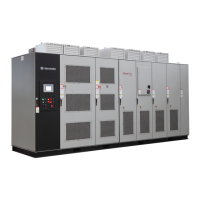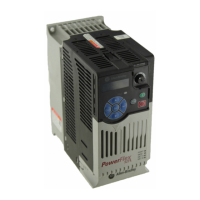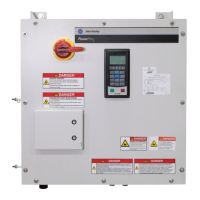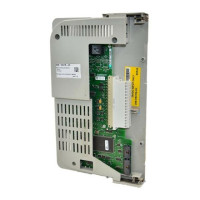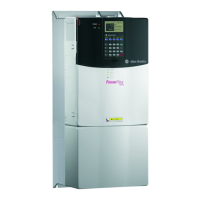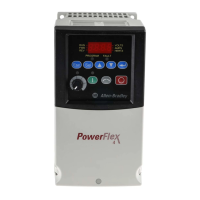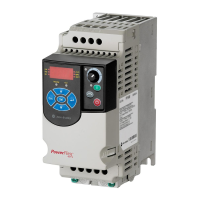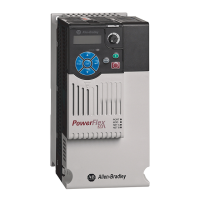Drive Ratings (kW, Amps, Volts) 2-75
DTO Fault
For all possible settings of [Drive OL Mode], the drive will always monitor
the T
j
and T
Drive
and generate a fault when either temperature becomes
critical. If T
Drive
is less than –20° C, a fault is generated. With these
provisions, a DTO fault is generated if the NTC ever malfunctions.
Temperature Display
The measured Drive temperature is displayed as a standard parameter. The
calculated IGBT temperature may be displayed as a test point parameter.
Analysis of the possible source or error shows that the drive temperature
should be within +/– 3 °C of the actual temperature, over the full range of
operation.
Low Speed Operation
When operation is below 4 Hz, the rating of the drive is reduced. At low
output frequencies the duty cycle is such that a given IGBT will carry more
of the load for a while and more heat will build up in that device. The
thermal manager will increase the calculated IGBT temperature at low
output frequencies and will cause corrective action to take place sooner.
When the drive is in current limit the output frequency is reduced to try to
reduce the load. This works fine for a variable torque load, but for a constant
torque load reducing the output frequency does not lower the current (load).
Lowering current limit on a CT load will push the drive down to a region
where the thermal issue becomes worse. In this situation the thermal
manager will increase the calculated losses in the power module to track the
worst case IGBT. For example, if the thermal manager normally provides
150% for 3 seconds at high speeds, it may only provide 150% for one
second before generating a fault at low speeds.
If operating at 60Hz 120%, lowering the current limit may cause a fault
sooner than allowing the drive to continue to operate. In this case the user
may want to disable current limit fold back.
Drive Ratings (kW,
Amps, Volts)
Refer to Fuses and Circuit Breakers on page 2-83.
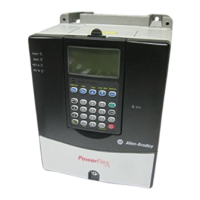
